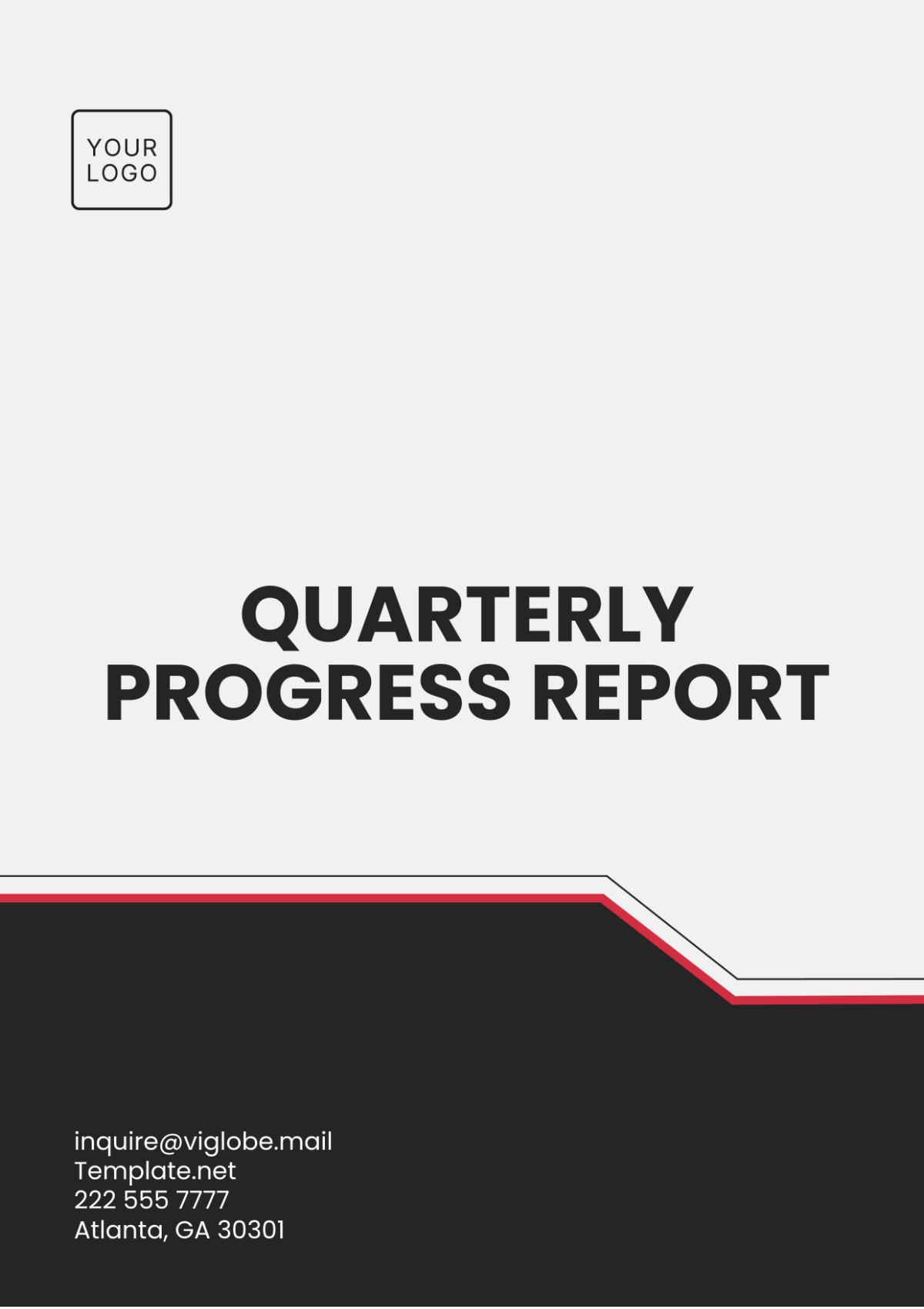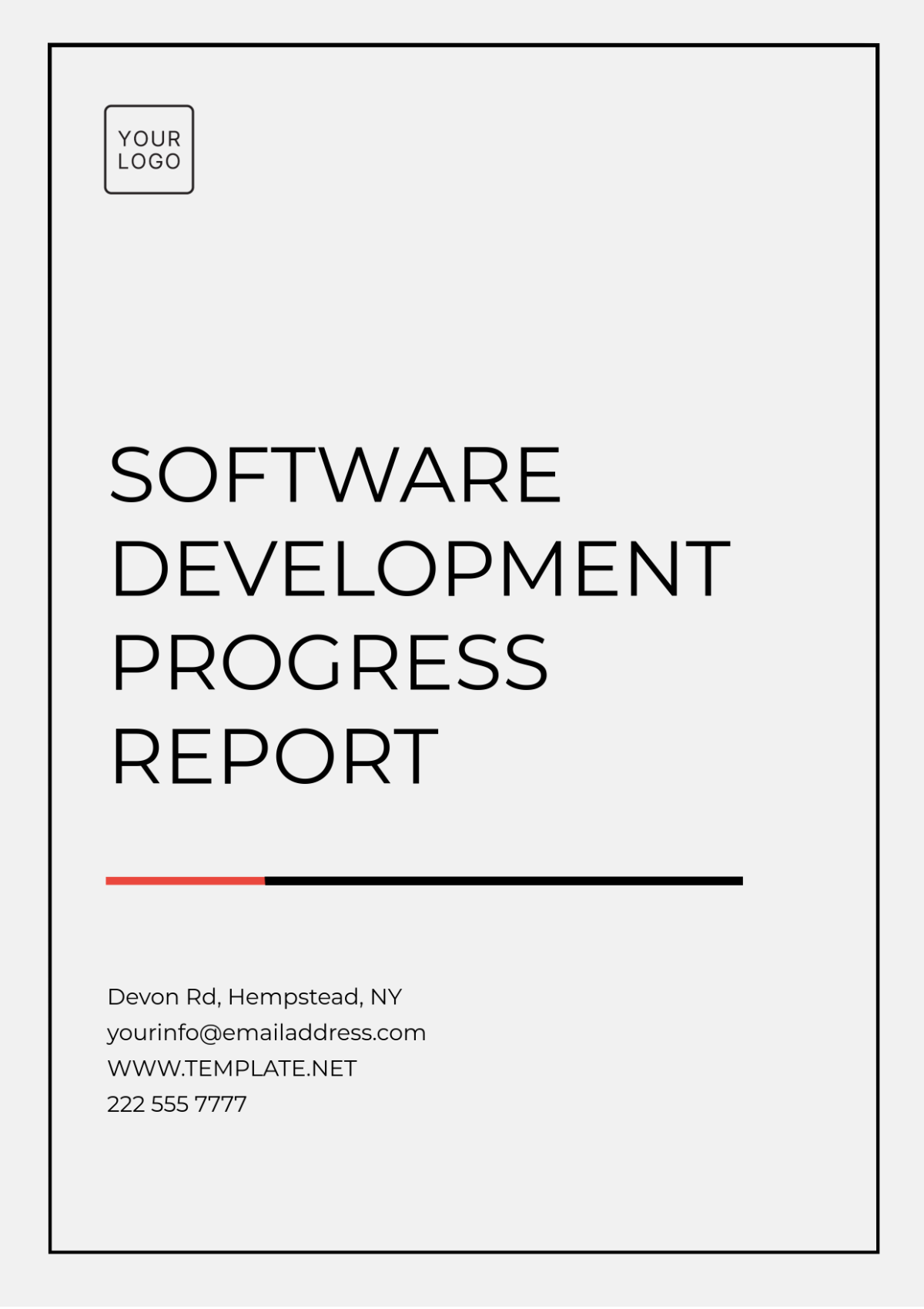Startup Progress Report
I. Introduction
This progress report covers the activities, achievements, and challenges encountered by [Your Company Name] over the [two-year] period from [January 2051 to December 2052]. The report is intended to provide stakeholders with a comprehensive overview of the company's development, including financial performance, project outcomes, and strategic initiatives. The analysis presented herein will inform future planning and decision-making to ensure the continued growth and success of the company.
II. Overview of Achievements
This section highlights the significant milestones and successes [Your Company Name] has achieved over the past two years. By examining key developments in [2051] and [2052], this overview demonstrates the company’s ability to grow, adapt, and thrive in a competitive market.
A. Key Milestones in [2051]
Establishment of Core Services: [Your Company Name] successfully launched its core business consulting services, focusing on strategic planning, market analysis, and operational efficiency. These services quickly gained traction, attracting several key clients in the technology and healthcare sectors.
Client Acquisition: The company secured contracts with [10] major clients, surpassing initial projections. The diverse client base helped to establish the company’s reputation and provided a stable revenue stream throughout the year.
Revenue Growth: Revenue for [2051] exceeded expectations, reaching [$2,500,000], a [30%] increase from the forecasted [$1,900,000]. This growth was driven by the high demand for consulting services and successful upselling of additional service packages.
B. Key Milestones in [2052]
Service Expansion: [Your Company Name] expanded its service offerings to include digital transformation consulting and risk management. These new services were well-received, contributing to a [20%] increase in client retention and attracting new business.
Strategic Partnerships: The company formed strategic partnerships with three industry-leading firms, enhancing its service delivery capabilities and broadening its market reach. These partnerships also facilitated the introduction of innovative solutions for clients.
Revenue and Profit Margins: Revenue for [2052] grew to [$3,200,000], a [28%] year-over-year increase from [2051]. Profit margins also improved due to operational efficiencies and the successful implementation of cost-saving measures.
III. Financial Performance
This section provides a detailed financial analysis of [Your Company Name] over the [two-year] period, focusing on revenue growth, profitability, and cost management. By comparing actual performance against forecasts, this financial review offers insights into the company’s financial health and areas for improvement.
A. Revenue Overview
Year | Forecasted Revenue | Actual Revenue |
|---|---|---|
2051 | $1,900,000 | $2,500,000 |
2052 | $2,800,000 | $3,200,000 |
Growth Rate:
The data above highlights the company’s strong financial performance over the [two-year] period. Actual revenue consistently outperformed forecasts, reflecting the effectiveness of the company's growth strategies and market positioning. The steady growth rate demonstrates the company’s ability to scale its operations and attract new business.
B. Profitability and Cost Management
[2051]: Profit margins were at [18%], with operational costs kept under control despite the rapid expansion of services. Key cost-saving measures included streamlining internal processes and renegotiating supplier contracts.
[2052]: Profit margins increased to [22%], supported by continued cost management initiatives and higher revenue from premium service offerings. Investment in technology also contributed to operational efficiencies.
IV. Project Outcomes
The project outcomes section reviews the major projects undertaken by [Your Company Name] during the reporting period. It assesses the impact of these projects on clients and the company’s overall success, showcasing [Your Company Name]'s capacity to deliver high-quality consulting services.
A. [2051] Projects
Project Alpha: Successfully completed a market analysis for a major healthcare client, resulting in a [15%] improvement in their market penetration strategy.
Project Beta: Implemented an operational efficiency plan for a technology firm, achieving a [20%] reduction in operational costs.
B. [2052] Projects
Project Gamma: Delivered a comprehensive digital transformation strategy for a financial services client, leading to a [25%] increase in their digital engagement metrics.
Project Delta: Provided risk management consulting to a manufacturing firm, helping them mitigate supply chain risks and improve overall resilience.
V. Strategic Initiatives
This section highlights the strategic initiatives that have driven [Your Company Name]'s growth and development over the past [two years]. By focusing on digital transformation and talent development, these initiatives have positioned the company to better meet client needs and adapt to changing market conditions.
A. Digital Transformation
[2051]: Initiated the development of digital consulting services to address the growing demand for technology-driven solutions. This included hiring specialized staff and investing in new tools.
[2052]: Launched the digital transformation service line, which quickly became a significant revenue generator. The company also began exploring AI-driven consulting solutions to further enhance service offerings.
B. Talent Development
[2051]: Focused on building a strong team by recruiting top talent from leading business schools and industries. The company also implemented a comprehensive training program to ensure continuous professional development.
[2052]: Expanded the talent development program to include leadership training and mentoring. This initiative aimed to cultivate future leaders within the company and support long-term growth.
VI. Risk Management
Risk management is critical to the sustained success of [Your Company Name]. This section outlines the key risks identified during the reporting period and the strategies implemented to mitigate them, ensuring the company’s resilience and preparedness for future challenges.
A. Identified Risks
[2051]: Market volatility due to economic uncertainties posed a significant risk. To mitigate this, the company diversified its client base across different industries.
[2052]: Cybersecurity emerged as a growing concern with the expansion of digital services. The company responded by implementing robust security protocols and conducting regular risk assessments.
B. Mitigation Strategies
[2051]: Developed a risk management framework that included contingency planning and regular risk reviews to ensure proactive management of potential threats.
[2052]: Enhanced the risk management framework to address emerging risks such as cyber threats and regulatory changes. The company also established a dedicated risk management team.
VII. Challenges Faced
While the past [two years] have been marked by success, [Your Company Name] has also faced several challenges. This section explores these challenges and the company’s responses, highlighting areas for potential improvement and future focus.
A. [2051] Challenges
Client Acquisition: Despite strong growth, the company faced challenges in acquiring clients in certain highly competitive markets.
Resource Allocation: Rapid expansion strained resources, requiring careful prioritization of projects and client engagements.
B. [2052] Challenges
Scaling Operations: As the company grew, maintaining quality service delivery across an expanding client base became a challenge.
Technological Adaptation: Keeping up with rapid technological changes required continuous investment in new tools and training.
VIII. Next Steps
This section outlines the strategic goals and long-term vision of [Your Company Name] for the coming years. It sets the direction for future growth, innovation, and market expansion, building on the successes and lessons learned during the reporting period.
A. Strategic Goals for [2053]
Service Diversification: Further expand service offerings to include sustainability consulting and data analytics.
Market Expansion: Enter new geographic markets to capitalize on emerging business opportunities.
Innovation: Continue investing in technology to enhance service delivery and maintain a competitive edge.
B. Long-Term Vision
[Your Company Name] aims to establish itself as a leader in the business consulting industry by [2055], known for its innovative solutions and commitment to client success. The company will focus on sustainable growth, leveraging its strengths to navigate challenges and capitalize on opportunities.
IX. Conclusion
The period of [2051-2052] has been a time of significant growth and achievement for [Your Company Name]. The company has successfully expanded its services, strengthened its client base, and delivered strong financial results. Despite the challenges encountered, the company’s proactive approach to risk management and commitment to innovation have positioned it well for continued success. As [Your Company Name] looks forward to [2053], it remains focused on achieving its strategic goals and realizing its long-term vision of becoming a leading consulting firm.















































